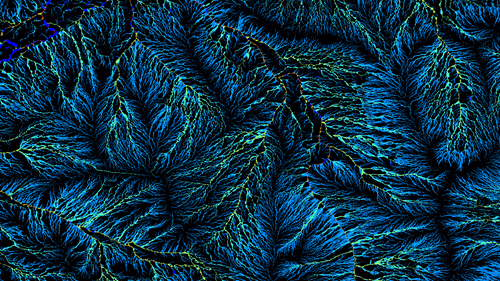A paper in today's issue of the journal Science [18 October 2013] pits the front-running ideas about the growth of supermassive black holes against observational data — a limit on the strength of gravitational waves from pairs of black holes, obtained with CSIRO's 64-m Parkes radio telescope in eastern Australia.
The study was jointly led by Dr Ryan Shannon, a Postdoctoral Fellow with CSIRO, and Mr Vikram Ravi, a PhD student co-supervised by the University of Melbourne (Australia) and CSIRO.
"For the first time, we've used information about gravitational waves as a tool in astrophysics," said Dr Shannon.
"It's a powerful new tool. These black holes are very hard to observe directly, so this is a new chapter in astronomy."
"One model for black-hole growth has failed our test and we're painting the others into a corner. They may not break, but they'll have to bend," said Mr Ravi.
Einstein predicted gravitational waves — ripples in space-time, generated by bodies changing speed or direction. Bodies, for instance, such as pairs of black holes orbiting each other.
When galaxies merge, their resident central black holes are doomed to meet. They first waltz together then enter a desperate embrace and merge.
"Theorists predict that towards the end of this dance they're growling out gravitational waves at a frequency we're set up to detect," Dr Shannon said.
Played out again and again across the Universe, such encounters create a background of gravitational waves, like the noise from a restless crowd.
Astronomers have been searching for gravitational waves with the Parkes radio telescope and a set of 20 small, spinning stars called pulsars.
Pulsars act as extremely precise clocks in space. We measure when their pulses arrive on Earth to within a tenth of a microsecond.
As gravitational waves roll through an area of space-time, they temporarily swell or shrink the distances between objects in that region. "That can alter the arrival time of the pulses on Earth," said Dr Michael Keith of the University of Manchester in the UK.
The Parkes Pulsar Timing Array (PPTA) project and an earlier collaboration between CSIRO and Swinburne University together provide nearly 20 years' worth of timing data.
"We haven't yet detected gravitational waves outright, but we're now into the right ballpark to do so," said the project leader, CSIRO's Dr George Hobbs.
Combining pulsar-timing data from Parkes with that from other telescopes in Europe and the USA — a total of about 50 pulsars — should give us the accuracy to detect gravitational waves "within ten years", he said.
Meanwhile, the PPTA results are showing us how low the background rate of gravitational waves is.
The strength of the gravitational wave background depends on how often supermassive black holes spiral together and merge, how massive they are, and how far away they are. So if the background is low, that puts a limit on one or more of those factors.
Armed with the PPTA data, the researchers tested four models of black-hole growth. They effectively ruled out black holes gaining mass only through mergers, but the other three models "are still in the game", said Dr Sarah Burke-Spolaor of California Institute of Technology (Caltech).
Images
B-roll video
Background information
Publication
Shannon RM, Ravi V, Coles WA, Hobbs G, Keith MJ, Manchester RN, Wyithe JSB, Bailes M, Bhat NDR, Burke-Spolaor S, Khoo J, Levin Y, Osłowski S, Sarkissian JM, van Straten W, Verbiest JPW, Wang J-B. "Gravitational-wave Limits from Pulsar Timing Constrain Supermassive Black Hole Evolution." Science, 18 October 2013.

